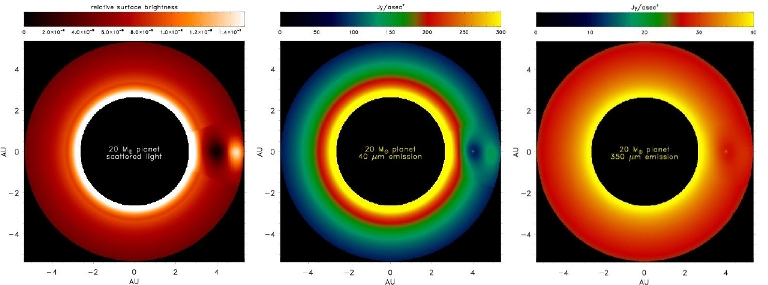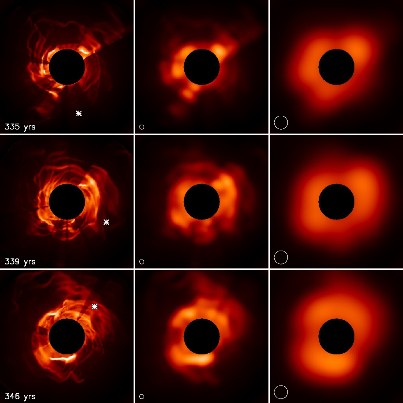 |
Hannah Jang-Condell is interested in planet formation. Her research focuses on interactions between forming planets and the circumstellar disks from which they arise. Using detailed radiative codes, she calculates observable signatures of planets embedded in gaseous disks. Her models of planet-forming disks are useful for interpreting data from young stellar objects, whether it be in visible and near infrared scattered light, or infrared to radio thermal emission. These models will help determine when, where, and how planets form around young stars. |
 Simulated images 20 Earth-mass planet embedded in a disk at 4 AU from the star. Left: scattered light. Center: infrared. Right: sub-millimeter emission. The scattered light pattern reflects the shape of the surface. Infrared emission shows heating near the surface of the disk due to the illumination of perturbations at the surface by the central star. Sub-millimeter observations probe the interior of the disk, which is less affected by surface perturbations. |

|
(from Jang-Condell & Boss, 2007) Simulated scattered light images of a disk undergoing gravitational instability, at different time steps. The position of the forming planet, indicated by a white asterisk, cannot be determined from scattered light alone. The left panels show the fully resolved images, while the center and right panels show what a 10-meter or 30-meter (respectively) diameter telescope might observe, assuming the star is at a distance of 140 pc. |
|
Simulated sub-mm emission from the same set of models shown in the previous figure. Since radio wavelengths probe the midplane rather than the disk surface, these images reflect the overall density structure of the disk while scattered light images show only tenuous surface features. |

|
Back to the LMA page

